Top image: US Servicemembers take cover on a beach at Paestum, south of Salerno, September 9, 1943. Official US Coast Guard photo, gift of Jeffrey and Mary Cole, from the Collection of The National WWII Museum, 2002.119.025.
1943
May 7 Tunis falls to the British 7th Armored Division, and Bizerte, the last remaining port in North Africa in Axis hands, is taken by troops of the US II Corps.
May 13 Axis forces in North Africa surrender to the Allies. Some 250,000 Germans and Italians are taken prisoner.
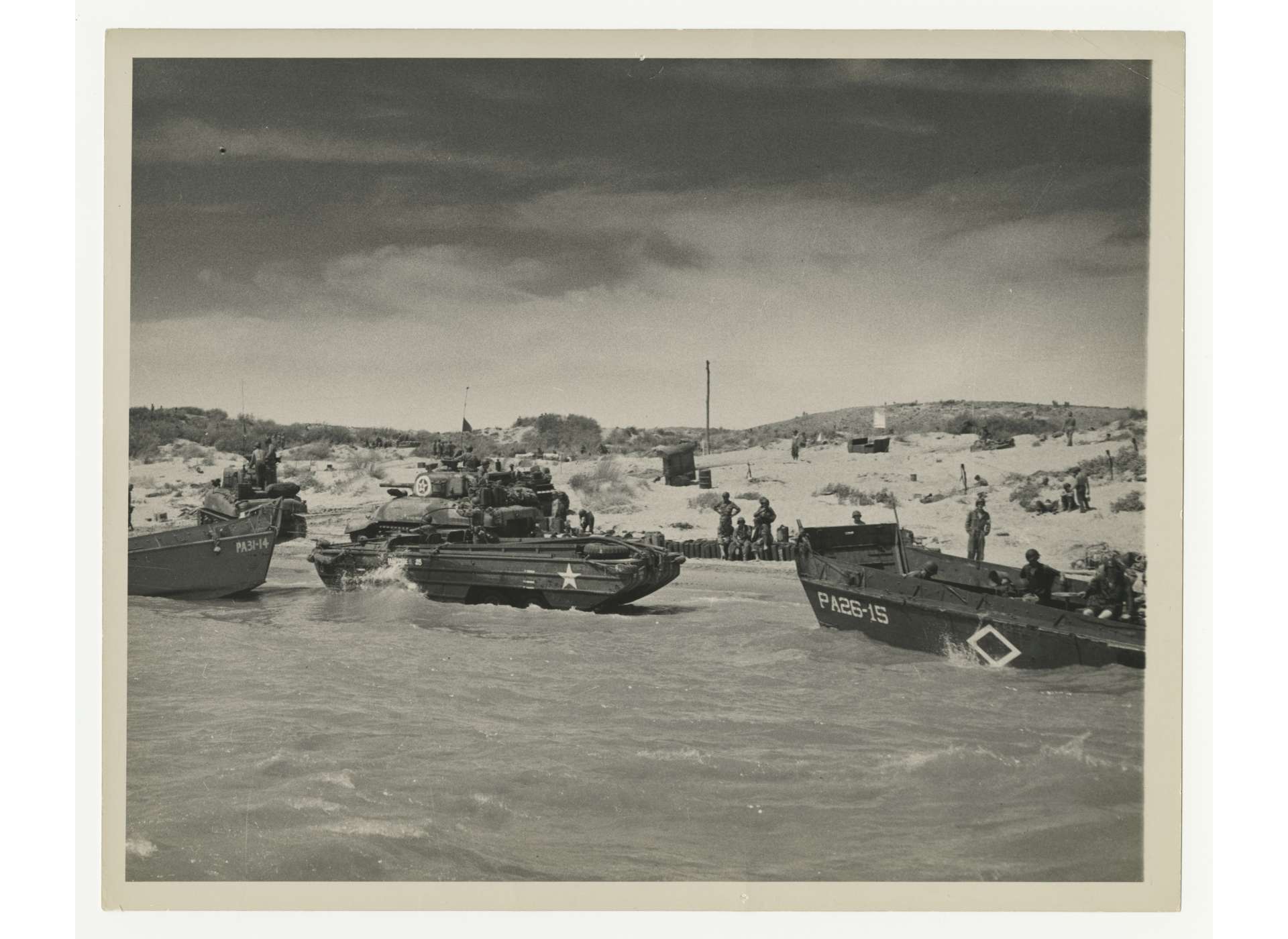
US LCVPs (Landing Craft Vehicle, Personnel), also known as “Higgins boats,” from USS Samuel Chase and USS Monrovia, an amphibious truck and a Sherman tank on Sicily, July 1943. Official US Coast Guard Photo, gift of Jeffrey and Mary Cole, from the Collection of The National WWII Museum, 2002.119.023.
July 9-10 Operation Husky, the Allied invasion of Sicily, begins under the overall command of General Dwight D. Eisenhower. US General George S. Patton’s Seventh Army lands on the southern coast of Sicily and British General Bernard Montgomery’s Eighth Army on the southeastern coast. Their two armies comprise the Fifteenth Army Group, led by British General Harold Alexander. Husky will be one of the largest amphibious operations of the entire war, with more than 3,000 ships (under the command of British Admiral Andrew Cunningham, Commander-in-Chief, Mediterranean Fleet) transporting more than 150,000 Allied troops (eight divisions by sea plus two airborne divisions) over the next three days. Air cover provided by more than 4,000 planes (from the Royal Air Force and the US Twelfth Air Force under the overall command of British Air Chief Marshal Arthur Tedder).
July 18 With the fighting in Sicily still raging, General Dwight D. Eisenhower wins support from the Combined Chiefs of Staff for Winston Churchill’s idea of a landing in mainland Italy. It will be a two-part operation, the first part in Calabria (Operation Baytown), the second at Salerno (Operation Avalanche), the northernmost beach in the Italian peninsula within range of Allied fighters based in Sicily. A third subsidiary landing, Operation Slapstick, will see elements of the British 1st Airborne Division transported by sea to seize the port at Taranto.
July 19 More than 500 Allied bombers strike Rome for the first time, hitting the San Lorenzo freight yard and steel factory, as well as the Littorio and Ciampino airports in the city. As many as 3,000 people are killed in the raid.
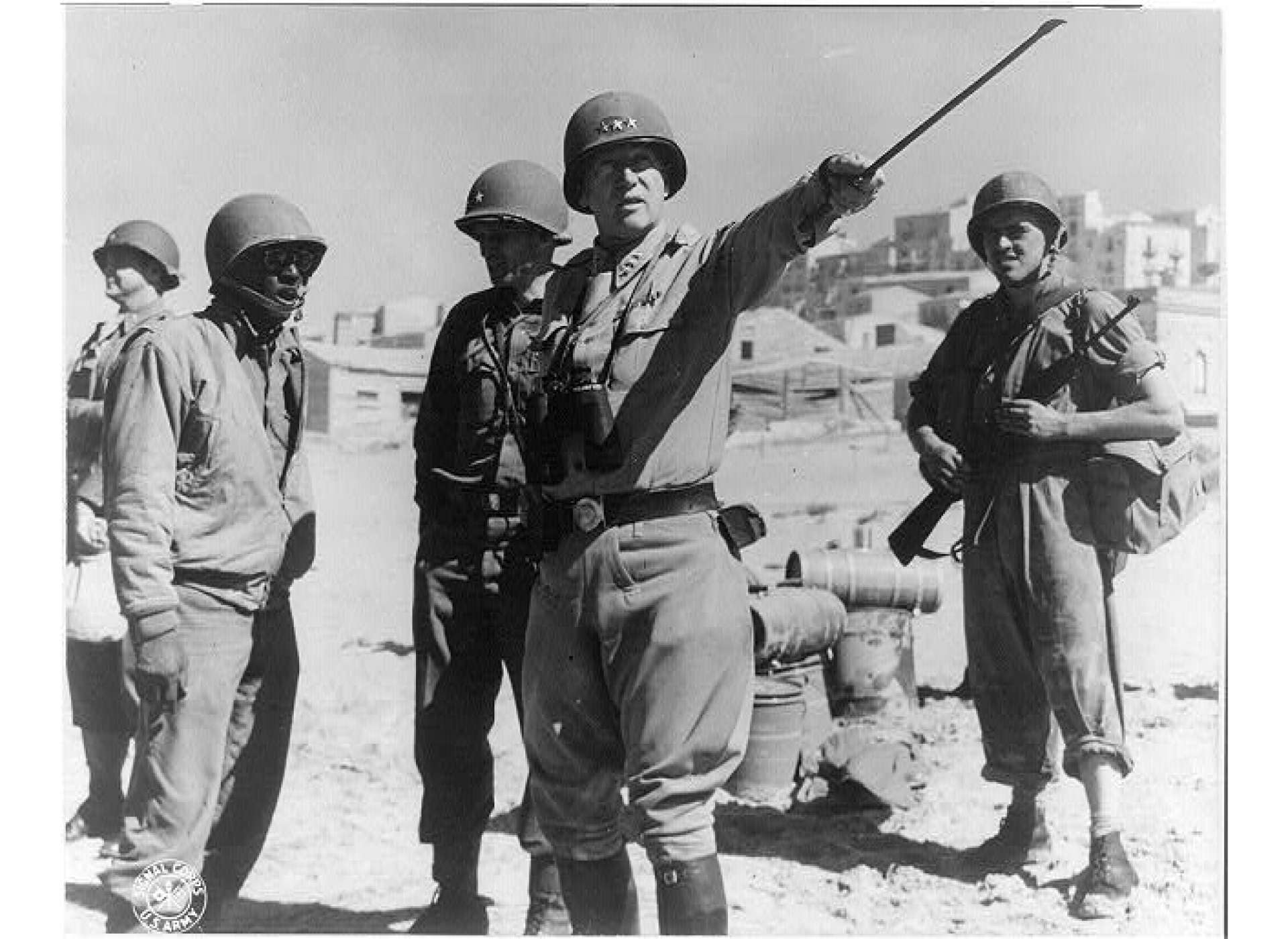
General George S. Patton, commander of US Seventh Army, instructing troops on Sicily, July 1943. US Army Signal Corps Photo No. 175663, 7-11-4, Library of Congress Prints and Photographs Division Washington, D.C. 20540 USA.
July 22 Troops of Patton’s Seventh Army take Palermo, the regional capital of Sicily, with Major General Lucien K. Truscott’s 3rd Infantry Division at the head of armored columns covering 100 miles in 72 hours. Palermo is the first city liberated by US forces in World War II. Many inhabitants of Palermo wave white flags and welcome the Americans. Montgomery’s mission to seize Messina, on the northeastern tip of Sicily, is slowed by stiff resistance from the German Hermann Göring Parachute Panzer Division.
July 24-25 A majority of the Fascist Grand Council approves (19 for, 7 against, 1 abstention) a motion of no confidence in Benito Mussolini.
July 25 King Victor Emmanuel III meets with Mussolini, removes him from office, and has him arrested. Marshal Pietro Badoglio, former chief of the Italian general staff and member of the Fascist Party, replaces Mussolini as prime minister and declares on the radio that Italy will remain loyal to Germany. “The war goes on and Italy remains faithful to its word,” Badoglio announces. Mussolini is arrested and held in multiple locations, before being confined in the Hotel Campo Imperatore on the Gran Sasso d’Italia in the Abruzzo Mountains, one of Italy’s tallest peaks.
August 1 The hardest fighting of the entire campaign sees the US 1st Infantry Division (“the Big Red One”) under the command of Major General Terry de la Mesa Allen Sr. (“Terrible Terry” Allen, as he is known to his men) battling the Germans for the town of Troina, centrally located in Sicily. With the Germans on the high ground and US forces under enemy observation for the duration of the battle, US losses are heavy, but the Americans grind forward.
August 5 First secret negotiations between Eisenhower and the Badoglio government take place to arrange an Italian surrender to the Allies.
August 6 The US 1st Infantry Division takes Troina as the Germans evacuate and continue their retreat to the northeast of Sicily.
August 7 Major General Allen relinquishes command of the US 1st Infantry Division to Major General Clarence R. Huebner. The August 9 issue of Time magazine features Allen.
August 11 Germans begin evacuating their forces at night from Sicily across the Straits of Messina. The bulk of the German force on Sicily escapes.
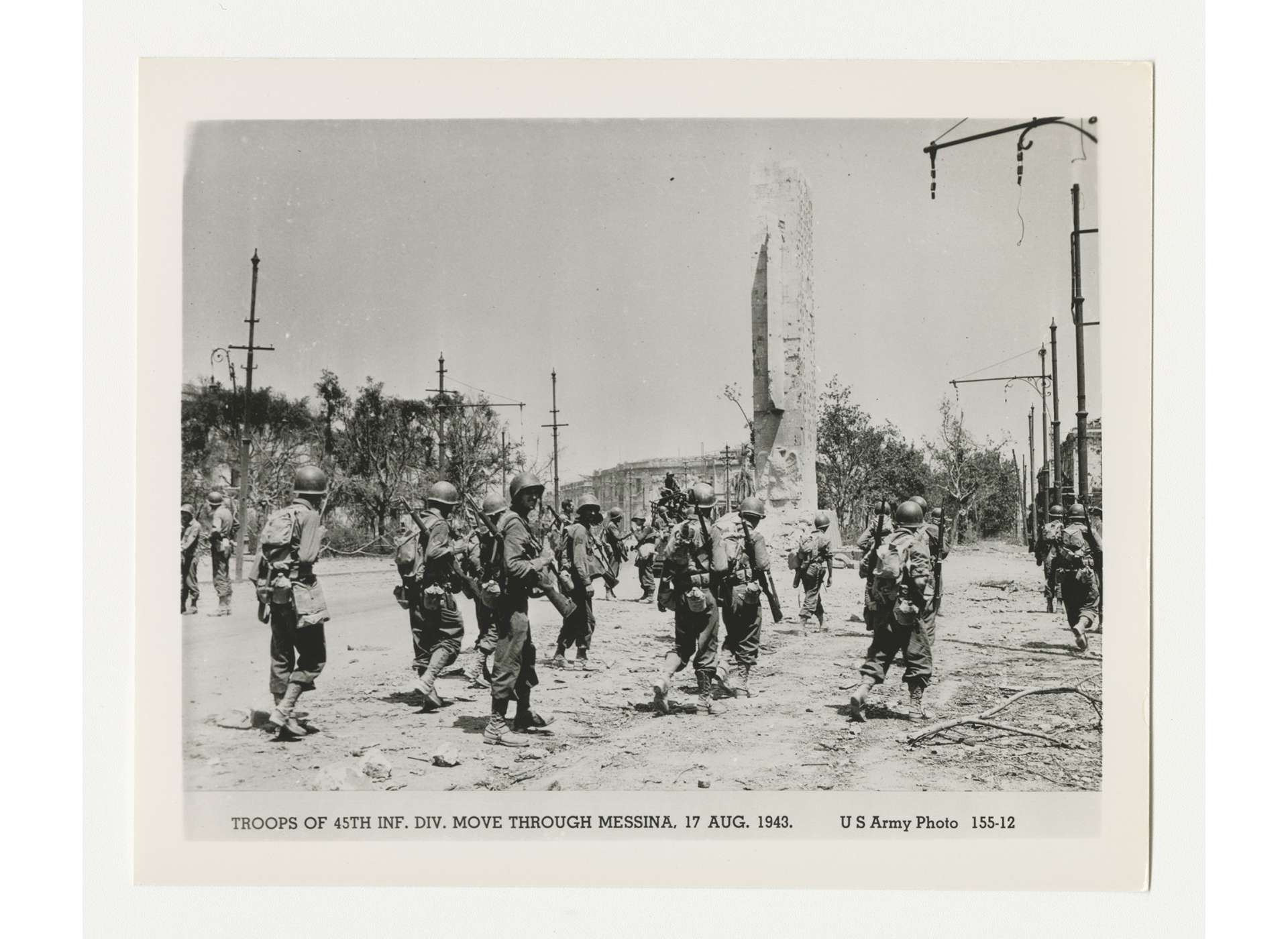
Members of the US 45th Infantry Division walking through wartorn Messina, August 17, 1943. Gift in memory of Sgt. Lyle E. Ebersprecher, from the Collection of The National WWII Museum, 2013.495.970.
August 17 Allies enter Messina, ending the conquest of Sicily. American troops of Patton’s Seventh Army win the “race to Messina,” arriving hours ahead of British and Canadian troops under Montgomery. Eisenhower reprimands Patton for two incidents (on August 3 and 10) involving two soldiers with “battle fatigue” in American field hospitals and orders him to apologize. There are more than 24,000 American, British, and Canadian casualties on Sicily.
September 3 Montgomery’s Eighth Army launches Operation Baytown, an amphibious operation at Reggio di Calabria, the toe of the Italian peninsula. The Badoglio government secretly signs an armistice with the Allies.
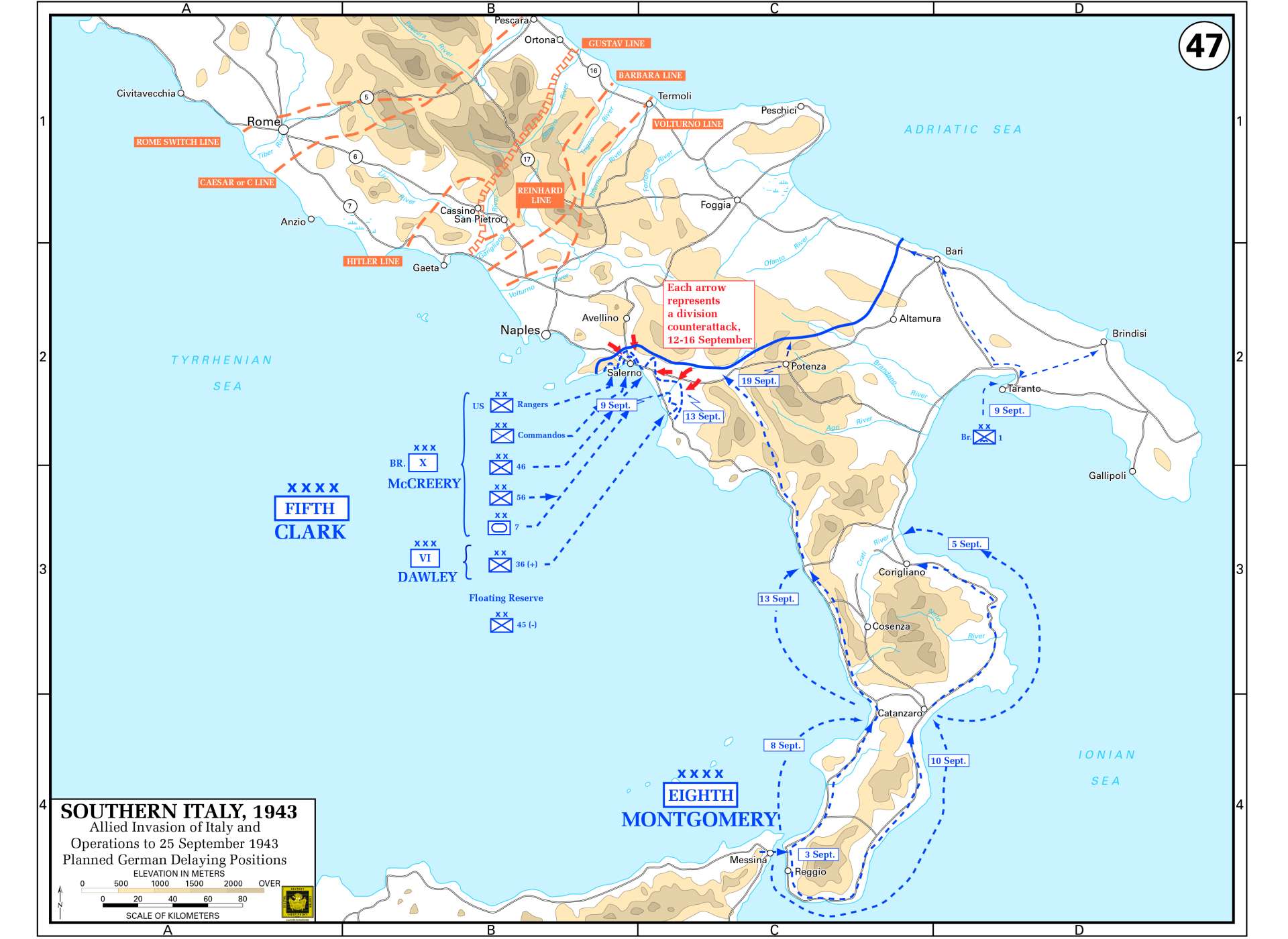
Map of Allied operations in southern Italy, September 3-25, 1943. Map courtesy of the United States Military Academy Department of History.
September 8 Eisenhower announces that the Italian government under Badoglio agrees to an armistice with the Allies (through General Giuseppe Castellano in Cassibile, Sicily)—and that Italy will have the status as a “co-belligerent” against Nazi Germany. German forces carry out Operation Axis (Fall Achse), occupying Italy using troops already in the country in conjunction with forces newly arriving via the Brenner Pass. Hitler orders that Italy be treated as an occupied country. Field Marshal Erwin Rommel is given responsibility for the occupation of Italy and for disarming the Italian armed forces. Field Marshal Albert Kesselring, in charge of central and southern Italy, takes over in Rome and leads the resistance to the Allied landing at Salerno. German forces will move to disarm Italian garrisons in France, Yugoslavia, Albania, and Greece.
September 9 General Mark Clark, commander of US Fifth Army, initiates Operation Avalanche, Allied landings on the Italian Peninsula at Salerno. British 1st Airborne Division captures Taranto without opposition in Operation Slapstick. Italian Friuli and Cremona Divisions fight the Germans on Corsica until they are crushed five days later. The Italian fleet based in La Spezia and Genoa heads first for Sardinia, then learning of the German actions there, make for Algeria. German bombers sink the battleship Roma with a guided glider bomb, with the loss of more than 1,500 lives, including Admiral Carlo Bergamini. The National Liberation Committee (CLN) is clandestinely established in Rome from six Italian anti-fascist political parties: the Italian Liberal Party, the Italian Socialist Party, the Italian Communist Party, Christian Democracy, the Labor Democratic Party, and the Action Party. Chaired by the moderate socialist Ivanoe Bonomi, the Committee’s structure is copied from the multi-party National Council of the Resistance, created by French resistance leader Jean Moulin earlier that year. King Victor Emmanuel III, Marshal Badoglio, and other officials flee Rome for the port of Brindisi via Pescara. Many Italians feel betrayed by the king and Badoglio’s abandonment of the capital. Resistance fighters in Corsica carry out an insurrection in the town of Ajaccio.
September 10 German units, especially the 16th Panzer Division, launch fierce counterattacks at Salerno, which for a time, threaten the integrity of General Clark’s beachhead. Admiral Alberto da Zara surrenders the Italian fleet to British Admiral Andrew Cunningham, Commander-in-Chief, Mediterranean Fleet, at Malta.
September 11 Germans occupy Rome. Germans begin to move troops from Sardinia to Corsica. Anti-fascist political parties in German-occupied northern Italy form the Liberation Committee of Northern Italy (CLNAI), committing to leading resistance activity in the area.
September 12 German paratroopers and SS men, brought in by glider and led by SS-Hauptsturmführer, Otto Skorzeny, carries out a raid, freeing Mussolini from imprisonment on the Gran Sasso. Mussolini meets Adolf Hitler in Rastenburg, Germany, two days later.
September 13 Italian 33rd Infantry Division (“Acqui”) resists the Germans on the Greek island of Cephalonia. Fighting continues until September 21. More than 1,300 Italians killed in battle. Over 5,100 massacred. Some 3,000 members of the division perish when the German ships they are on (they were to be taken to concentration camps) are sunk by Allied aircraft. German 1st Mountain Division, under the command of General Hubert Lanz, is responsible. Hitler assures Pope Pius XII that the Germans will honor the sovereignty of the Pope over Vatican City and shield the latter from combat.
September 14 Allies land on Sardinia.
September 15 Allies secure the beachhead at Salerno, thanks to the skillful use of artillery and massive naval and air support.
September 16 Montgomery’s Eighth Army spearheads, moving from Calabria, meet up with troops of Clark’s Fifth Army in the beachhead near Salerno.
September 18 German evacuation of Sardinia is completed.
September 19 Confrontations between Italian partisans and Germans ensue. The village of Boves in the province of Cuneo is destroyed and the village’s mayor and parish priest are burned alive. A week later some 50 Jews are massacred at Meina on Lake Maggiore, north of Milan, by men of the SS Panzergrenadier Division “Leibstandarte SS Adolf Hitler.” This is the start of the Third Reich’s reign of terror in Italy.
September 23 Mussolini establishes the Italian Social Republic, a puppet regime often referred to as the Salò Republic because of its location in northern Italy. Marshal Rodolfo Graziani will shortly thereafter be named Minister of Defense. Germans organize the first round-up of Italian men born between 1910 and 1925 for forced labor, dragooning some 18,000 men in Campania and Latium.
September 25 Reichsführer SS Heinrich Himmler notifies Herbert Kappler, head of the SD (the intelligence gathering branch of the SS) in Rome, to make preparations for the immediate deportation of Jews from Rome.
September 26 Without authorization from Himmler, Kappler orders Dante Almansi and Ugo Foà, two leaders of the Jewish community in Rome, to give him 50 kilograms of gold to save Rome’s Jewish population from deportation. They comply with Kappler’s demand two days later.
September 27 “Four Days of Naples,” the uprising in the city, recently put under martial law by the Germans, starts with the townspeople erecting barricades and attacking German soldiers. More than 660 Neapolitans perish during these four days. Troops of the British Eighth Army capture the airfields near Foggia.
September 29 More detailed armistice agreement reached between the Allies and the Badoglio government, exerting Allied control over the Italian armed forces and pronouncing the aim of eradicating Fascism.
October 1 Allied troops enter Naples.
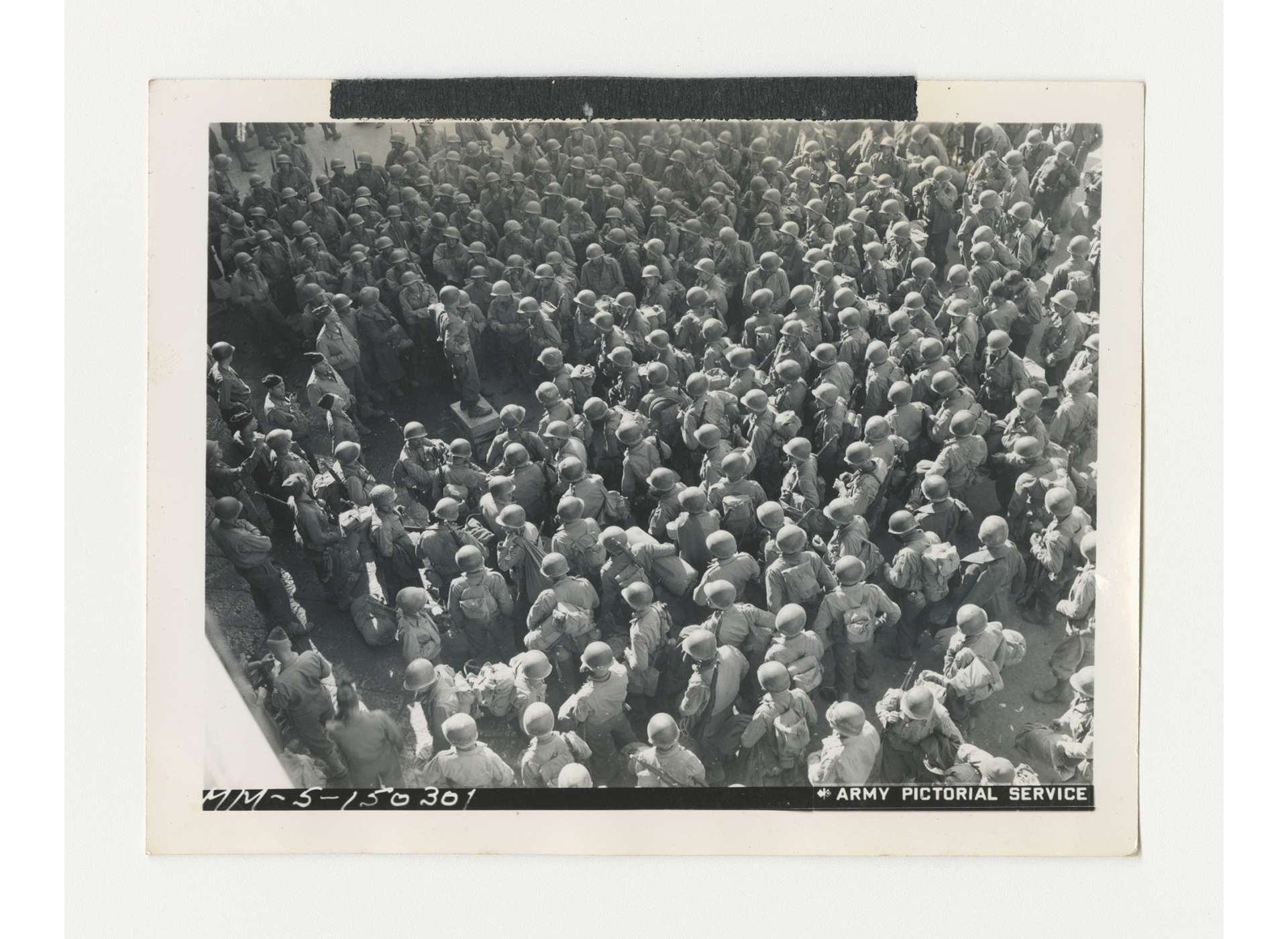
Hundreds of American soldiers assemble at a rest camp near Naples and listen to update, Fall 1943. US Army Signal Corps photo, gift of Ms. Regan Forrester, from the Collection of The National WWII Museum, 2002.337.236.
October 3 Troops from the 2nd New Zealand Division arrive in Taranto. Germans complete evacuation of Corsica, after battling Free French troops and resistance fighters.
October 6 Adolf Eichmann’s subordinate, Theodor Dannecker, arrives in Rome with a group of Waffen-SS personnel to organize the deportation of Jews.
October 12 Fifth Army, launching the first of five offensives executed between mid-October and mid-January 1944, establishes bridgeheads over the next four days across the Volturno River, north of Naples.
October 13 Italy declares war on Germany. The declaration, signed by Victor Emmanuel III, is transmitted to Berlin through the Italian Embassy in Madrid.
October 16 Dannecker’s team, with support from Wehrmacht troops, arrests more than 1,200 Jews in Rome. Two days later 1,030 Jews, a majority of them women and 200 of them children, are deported to Auschwitz, where most of them are murdered immediately. Only 15 survive the war.
October 18 The Allied Military Government (AMG) is announced with control over the zones of combat in Italy and the region of Naples, with its indispensable port. Authority in the liberated provinces of Taranto, Lecce, Brindisi, and Bari is ceded to the Badoglio government but under the oversight of an Allied Commission, directed by Noel Mason-McFarlane, former British governor of Gibraltar.
October 23 US 1st Infantry Division departs Sicily for England to train for the cross-channel attack into northern France. It is one seven divisions withdrawn from the theater.
November 1 The US Fifteenth Air Force is created under the command of Major General James H. Doolittle, the hero of the April 1942 raid on Tokyo. Doolittle establishes Fifteenth Air Force’s headquarters at Bari, on the Adriatic coast. Eventually, the Fifteenth Air Force, initially using bases at Foggia, includes seven fighter groups (among them the Tuskegee Airmen of the 332nd Fighter Group) and 21 bomb groups, carrying out missions over northern Italy, Germany, Austria, Hungary, Czechoslovakia, and France.
November 6 Hitler orders Rommel to leave Italy and go to France to prepare defenses there against an expected Allied invasion. Two weeks later Kesselring becomes supreme commander of German forces in Italy.
November 20 Workers demonstrate in Turin. Fiat factory workers there go on strike. German General Bodo Zimmermann entrusted with putting down the strike.
November 22 British Eighth Army starts offensive on the Sangro River, Montgomery’s final battle in the Mediterranean theater.
December 1 German line on the Sangro is broken
December 2 German Junkers 88 bombers strike Bari Harbor. In total, 17 ships are sunk and dozens more suffered damage. As many as 1,000 merchant marine and military personnel died, as well as possibly another 1,000 civilians. More succumbed later to the effects of mustard gas exposure from a secret cargo of the toxic chemicals aboard SS John Harvey, an American Liberty ship destroyed during the raid.
December 3-24 2nd New Zealand Division fights for Orsogna, north of the Sangro
December 2-7 At the Cairo Conference US President Franklin D. Roosevelt informs British Prime Minister Winston Churchill that he has chosen General Dwight D. Eisenhower to lead the Allied invasion of France, planned for the coming year. Italy increasingly becomes a secondary theater of Allied operations.
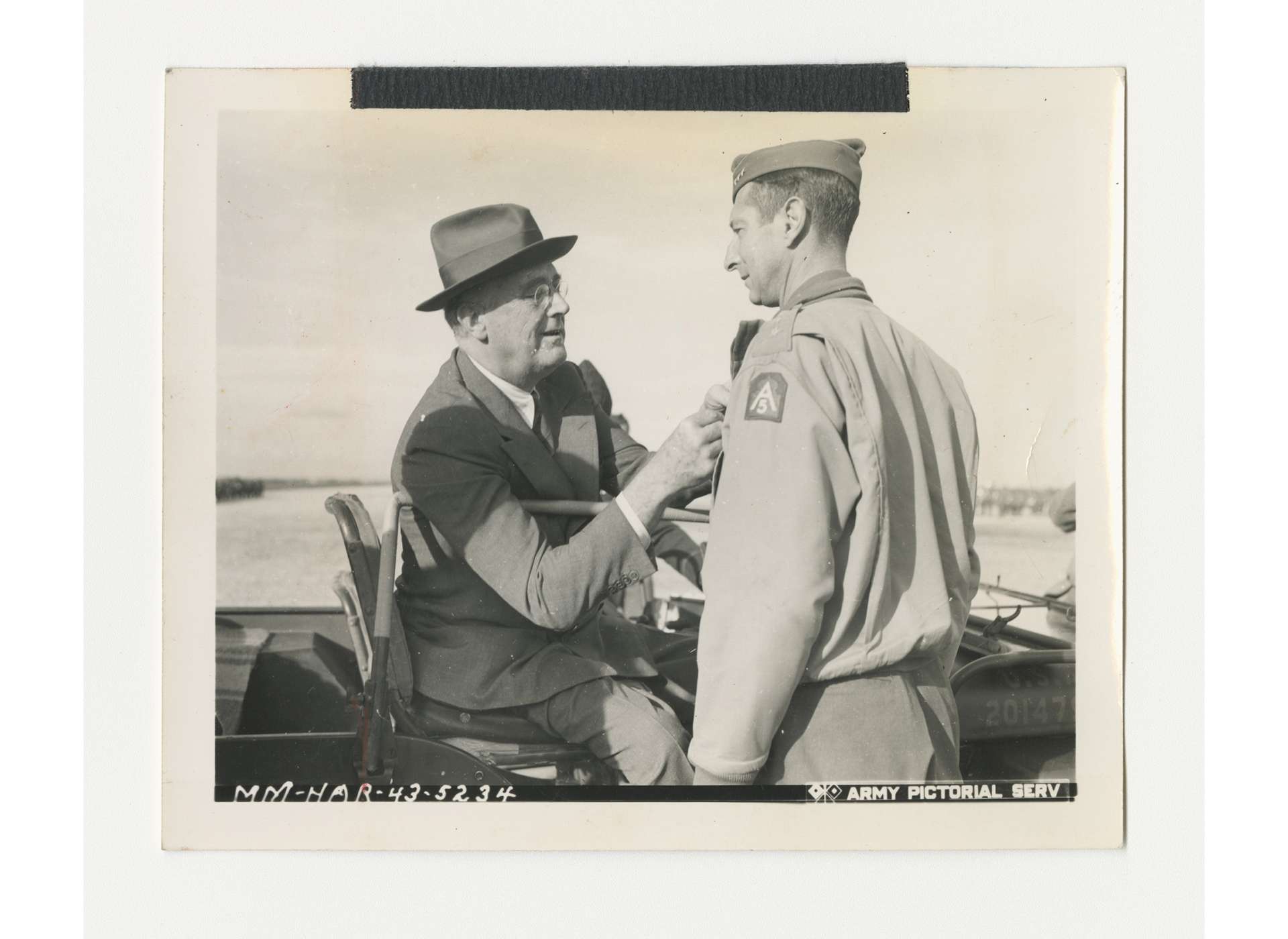
President Franklin D. Roosevelt pins the Distinguished Service Cross on General Mark Clark, commander of US Fifth Army, at Castelvetrano, Sicily, December 10, 1943. US Army Signal Corps photo, gift of Ms. Regan Forrester, from the Collection of The National WWII Museum, 2002.337.423.
December 24 Lieutenant General Sir Oliver Leese succeeds Montgomery as commander of Eighth Army.
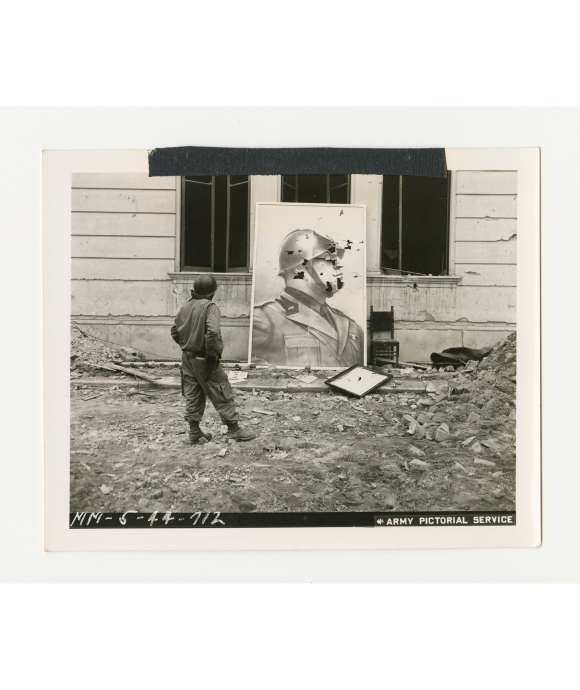
The Allied Campaign in Italy, 1943-45: A Timeline, Part Two
January 8, 1944–December 31, 1944
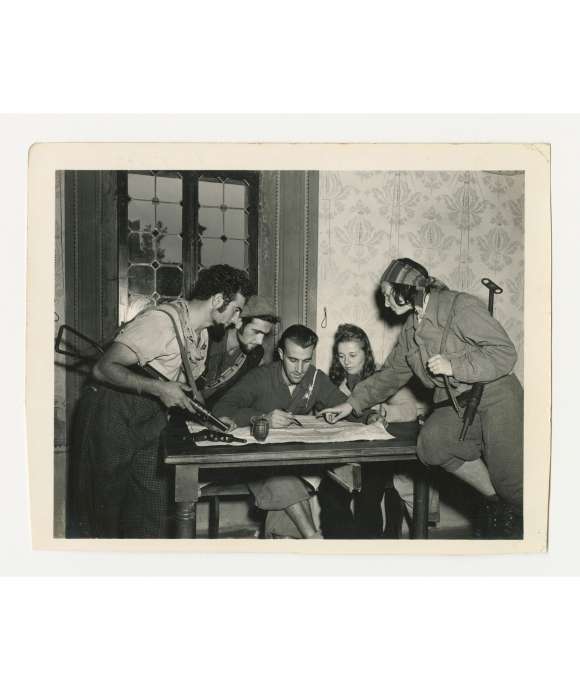
The Allied Campaign in Italy, 1943-45: A Timeline, Part Three
January 1, 1945–May 8, 1945 (V-E Day)
Jason Dawsey, PhD
Jason Dawsey, PhD, is ASU WWII Studies Consultant in the Jenny Craig Institute for the Study of War and Democracy.
Cite this article:
MLA Citation:
APA Citation:
Chicago Style Citation:
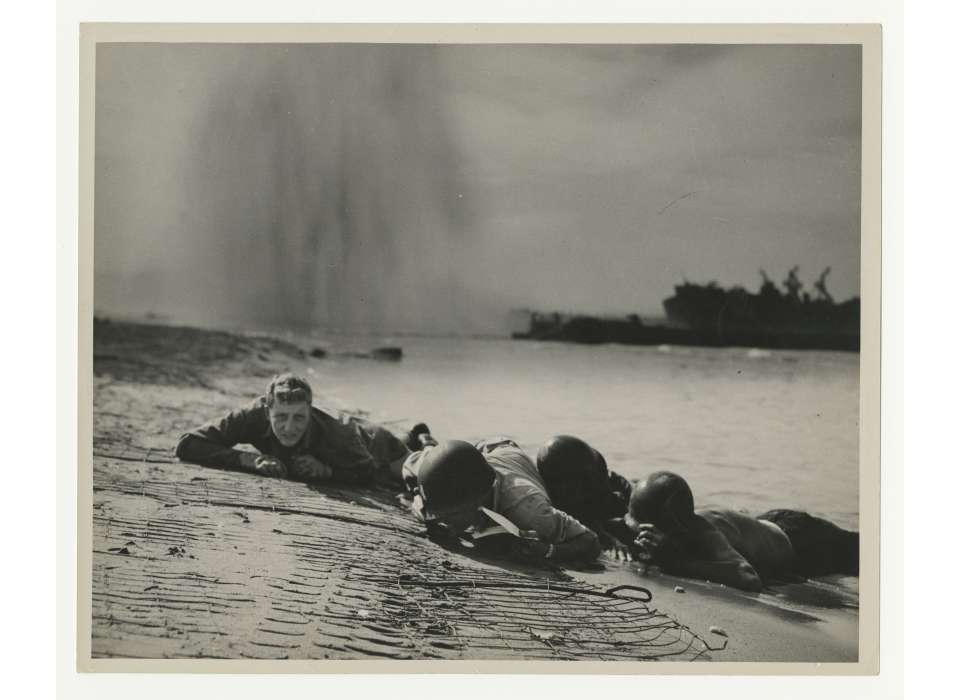




![Max Fuchs, New York City cantor, sings as Rabbi Sydney [sic] Lefkowitz, Richmond, VA, conducts the first Jewish services from Germany.](/sites/default/files/styles/max_650x650/public/2025-10/image1.jpg)



